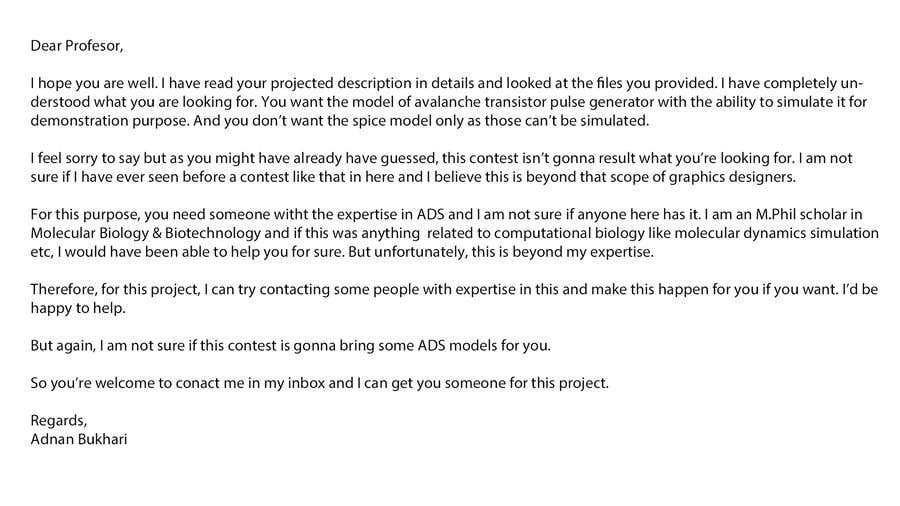thylacine1975
Full Member level 6
- Joined
- Dec 7, 2010
- Messages
- 337
- Helped
- 227
- Reputation
- 448
- Reaction score
- 214
- Trophy points
- 1,323
- Location
- Canberra, Australia
- Activity points
- 5,166
Good evening folks,
I'm helping put a course together using avalanche transistors to explore time domain reflectometry etc techniques and I could really use a hand with creating a simulation model based around ADS. I've packaged up the (paid) task and posted it to freelancer(.)com for anyone with skills to spare in the next 2 weeks or so.

 www.freelancer.com
www.freelancer.com
Since posting the job my students have told me there are much newer versions of ADS out there now, as well as a stack of other simulation tools that may be suitable. At this stage I don't actually care what it's simulated with (*except* LT/pSpice) - as long as we can numerically capture the transistor's interaction with surrounding transmission line structures.
/beg-for-help
I'm helping put a course together using avalanche transistors to explore time domain reflectometry etc techniques and I could really use a hand with creating a simulation model based around ADS. I've packaged up the (paid) task and posted it to freelancer(.)com for anyone with skills to spare in the next 2 weeks or so.

Agilent Advanced Design System model of an avalanche transistor pulser
I am looking for an experienced engineer who can create an Agilent Advanced Design System model of an avalanche transistor pulse generator. I am teaching my students about effects such as reflections from impedance discontinuities, propagation time, dispersion etc through a combination of...
Since posting the job my students have told me there are much newer versions of ADS out there now, as well as a stack of other simulation tools that may be suitable. At this stage I don't actually care what it's simulated with (*except* LT/pSpice) - as long as we can numerically capture the transistor's interaction with surrounding transmission line structures.
/beg-for-help